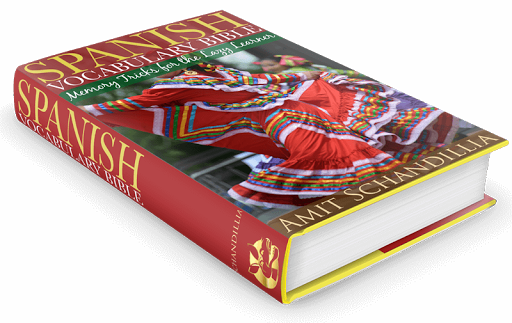The Grammar of Conditional Constructions
There are actually four types of conditionals in Spanish, but we’re going to focus on two of the most common ones, known as the first and second conditionals. The first conditional describes events that have not occurred, but it’s quite possible that they could indeed occur. Here are some examples of the first conditional:
- Si te veo mañana, te voy a abrazar. (If I see you tomorrow, I’m going to hug you.)
- Si no se porta bien, lo castigaré. (If he doesn’t behave himself, I’ll punish him.)
- Voy a estar feliz si mañana no hace lluvia. (I’ll be happy if it doesn’t rain tomorrow.)
As you can see, the first conditional is formed using two verb tenses: the present tense (marked in bold) and the future tense (underlined). The future tense can be formed either with future tense conjugations (e.g., castigaré), or by using the verb “ir a” (e.g., voy a estar feliz). Like the first conditional, the second conditional describes events that have not occurred. But unlike the first conditional, the events in second conditional constructions are highly unlikely or even impossible to occur. Rather, they describe what would happen if the world were fundamentally different. Here are some examples of the second conditional:
- Si tuviera un millón de dólares, te compraría una casa. (If I had a million dollars, I would buy you a house.)
- Si fuera un animal, querría ser un gato. (If I were an animal, I’d want to be a cat.)
- El mundo sería mejor si no existiera la pobreza. (The world would be better if poverty didn’t exist.)
The second conditional uses different verb tenses from the first conditional. The impossible event uses the past subjunctive (in bold), whereas the hypothetical consequence uses the conditional verb conjugations (underlined). Still with me? Great. Now that we’ve gotten past the nitty-gritty of the grammar underlying conditional constructions, we’re ready to move on to the fun part: the music.
First conditional: “Hacer un puente” by La Franela
 |
| La Franela at La Trastienda November 26, 2011 Photo credit: Facug licensed CC BY SA 3.0 |
Argentina produces plenty of great music, and La Franela is one of the better-known current Argentine rock bands. Its ead singer is Daniel “Piti” Fernández, who previously founded the popular band Los Piojos. Fernández has a voice that is clear and easy to understand for non-native speakers, with a charming Argentine twang that is characteristic of Rioplatense Spanish, spoken in several countries in South America.
The song “Hacer un puente” is a light, catchy tune that deals with the great lengths that we go to in the name of love. And for language learners, it’s a great way to practice the first conditional. Just take a look at its first two stanzas:
Si te veo, amor, del otro lado (If I see you, my love, on the other side)
No voy a dudar (I will not doubt)
Todo lo que veo (What I’m seeing)
Y todo lo que siento (Or what I’m feeling)
The stanza starts with an “if” clause, followed by a present-tense verb: Si te veo. Then, Fernández describes the consequence of that clause by using the future tense: No voy a dudar. Therefore, we know that Fernández is using the first conditional, and is thus talking about something that’s hypothetical but possible. Indeed: seeing his beloved is something well within the realm of possibility. This pattern repeats in the next stanza:
Si te veo, amor, del otro lado (If I see you, my love, on the other side)
Yo voy a cruzar (I will cross)
Todo lo que tengo (Whatever I have to)
Es todo lo que intento (It’s my only intention)
Singing along to La Franela’s catchy tune is certainly a more fun way of remembering the first conditional compared to memorizing rules or doing mindless, repetitive exercises.
Second conditional: “Si yo fuera un chico” by Beyoncé
 |
| Isn't listening to her more fun than mugging up grammar? Photo credit: HotGossipItalia licensed CC BY 2.0 |
Beyoncé’s wildly popular “If I Were a Boy” tells the story of a disgruntled girlfriend who images how she would treat her girlfriend is she were a man. The song attained such popularity, in fact, that it was translated and re-recorded into Spanish.
As the title suggests, Beyoncé’s single is not like “Hacer una puente”: the events it describes are not possible. Rather, Beyoncé is imagining what she would do if the world were different, and she were male. As such, she uses the second conditional abundantly, and in doing so provides a great lesson for Spanish language-learners. For instance, she starts off by describing how she would dress herself:
Si yo fuera un chico (If I were a boy)
Solo por una vez (Just for a moment)
Yo me vestiría como quiero (I would dress myself however I want)
The verb that follows “si” is fuera, the past subjunctive of ser. This is a dead giveaway that we’re dealing with an impossible situation in the second conditional. Beyoncé describes the consequence of this situation — me vestiría como quiero — using the conditional tense. Later in the song, she uses similar constructions:
Si yo fuera un chico (If I were a boy)
Sé que podría saber (I know I would know)
Comprender mucho mejor lo que es amar a una mujer (How to better understand what it means to love a woman)
Sabría escuchar (I would know how to listen)
Pues conozco el dolor (Because I know the pain)
De perder a quien se quiere (Of losing someone you love)
Beyoncé provides plenty of examples of the second conditionals throughout the song. And even if you can’t hit the high notes that Beyoncé belts out with such ease, her song can get you thinking in the second conditional — what would you do if you suddenly woke up as the opposite gender?
Conclusion
These two songs are fun and catchy, and constitute a relatively painless way of learning the complex grammar of conditional constructions. And don’t forget to sing along: by doing so, you’ll get in some valuable speaking practice, as well. Put them on your playlist when you go running, when you’re traveling to work or class, or even just to listen to around the house — you’ll be a master of the conditional in no time.
¡Si escuchas estas dos canciones, serás un experto en los condicionales!
Paul, the contributor of this article, writes in behalf of Language Trainers®, a language tutoring service offering personalized course packages to individuals and groups. If interested, you can check out their free Spanish level tests and other resources on their website.



.png)